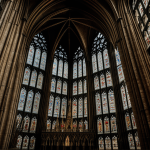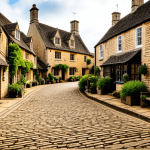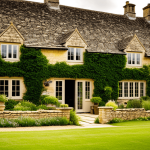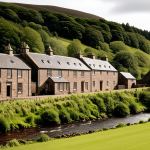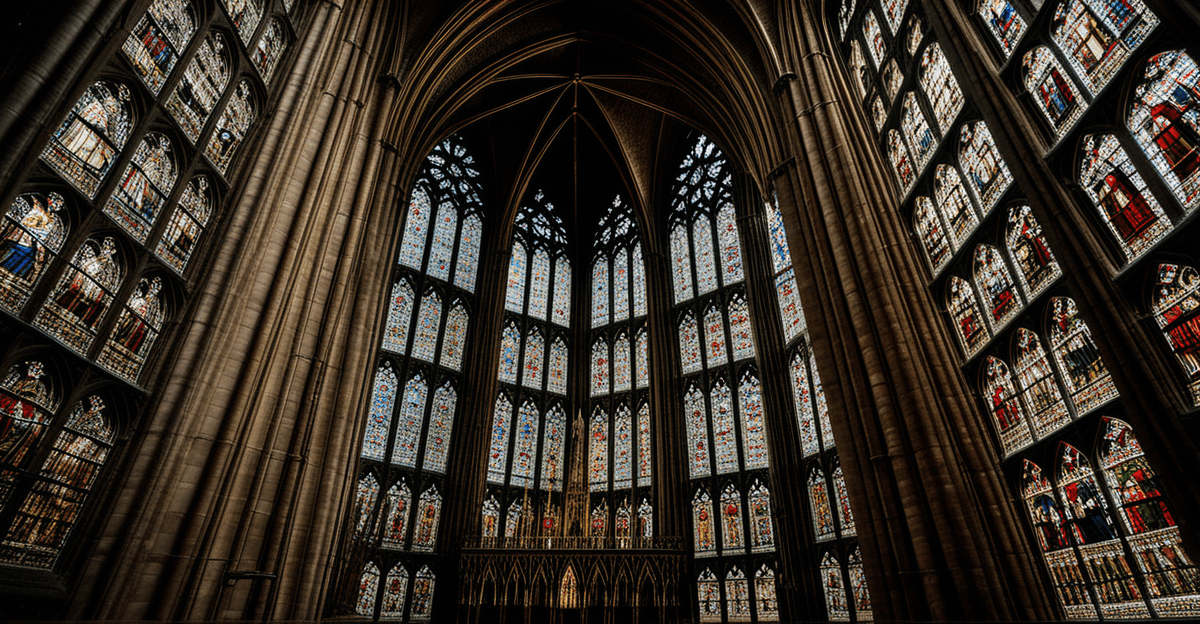Overview of Medieval UK Cathedrals
Medieval cathedrals in the UK stand as monumental testaments to a bygone era, rich in historical significance. These majestic structures not only reflect the architectural prowess of their times but also serve as cultural and spiritual focal points of medieval society. Each cathedral embodies a distinct architectural style that offers a glimpse into the diverse influences and regional characteristics of the period.
The historical backdrop of these cathedrals adds to their allure. During the medieval period, cathedrals were central to community life, acting as hubs for both religious and civic activities. The architectural styles vary, with each region showcasing unique interpretations of design, ranging from the soaring heights of Gothic architecture to the solid, imposing structures indicative of Romanesque influences.
Also read : Explore england’s iconic lighthouses: an ultimate guide to unforgettable guided tours
In this medieval landscape, cathedrals were more than mere places of worship; they were cultural landmarks that shaped and were shaped by the community’s beliefs and traditions. Their significance is further underscored by the intricate designs and meticulous craftsmanship visible in every stone and stained glass window, echoing the artistic and spiritual aspirations of a society deeply rooted in faith.
Architectural Features of Key Cathedrals
In the medieval era, cathedrals served as monumental showcases of architectural prowess. They reflect a unique blend of design elements that highlight regional variations and architectural techniques. Understanding the diverse architectural features of these cathedrals provides insight into the past and the creative expressions of medieval builders.
In parallel : Discover the Ultimate UK Hog Roast: Top Venues and Tips for an Authentic Feast
Gothic Architecture
Gothic architecture is characterized by its innovative use of light and space. Cathedrals of this style often feature soaring spires and pointed arches, aiming to symbolize the divine aspiration towards heaven. Stained glass windows narrate biblical tales while casting vibrant colors across the interiors, creating both a spiritual and visual feast for worshippers. Flying buttresses are a notable innovation here, helping to support the structure and allowing for higher walls and larger windows.
Romanesque Influences
Before Gothic’s ascent, Romanesque architecture dominated, recognized for its solidity and grandeur. This style incorporates rounded arches, thick walls, and sturdy piers, giving cathedrals a fortress-like appearance. The reliance on stone vaulting and limited window openings result in a majestic, yet dim interior atmosphere. The sculptural decorations around doorways and arches often depict biblical scenes, reinforcing the connection to religious teachings.
Unique Structural Elements
Several cathedrals boast unique elements that display innovative medieval engineering. For instance, Durham Cathedral’s combination of Romanesque robustness with early Gothic elements marks it as an architectural trailblazer. The large ribbed vaults highlight the transition towards a lighter, more elevated structure. In contrast, Salisbury Cathedral showcases the tallest church spire in Britain, demonstrating both ambition and architectural skill. Each cathedral thus stands as a testament to the era’s artistic spirit and technological advancements.
Notable Historical Events Associated with Cathedrals
Medieval cathedrals in the UK were not merely architectural wonders but also played pivotal roles in notable historical events. These structures often served as the backdrop for significant moments that shaped regional and national narratives.
One prominent event is the signing of the Magna Carta in 1215, which took place near Salisbury Cathedral. This crucial document laid the groundwork for constitutional governance, influencing legal systems worldwide. Furthermore, cathedrals like Canterbury became centers of pilgrimage following the martyrdom of Thomas Becket in 1170, a turning point in church-state relations and a compelling narrative that attracted pilgrims from all over Europe.
Throughout the English Reformation in the 16th century, cathedrals were radically transformed. The dissolution of the monasteries under King Henry VIII resulted in many cathedrals being re-purposed or damaged, changing their religious roles and architectural features. These transformations reflect the cathedrals’ status as socio-political hubs, deeply intertwined with the events of their times.
Cathedrals also functioned as community centers during times of conflict. Their vast spaces were not only for spiritual gatherings but often housed refugees during wars and served as rallying points for both civic and military endeavors. The cultural impact of these historic events underscores the multifaceted role cathedrals played in shaping medieval society.
Cultural Significance and Community Roles
Medieval cathedrals were more than architectural wonders; they were the heart of community life and religious practices. These structures stood as the epicenter for many societal activities. Cathedrals were not just places of worship; they played a substantial role in community engagement, hosting various events that brought people together and solidified local traditions.
Cathedrals often hosted notable festivals, which attracted visitors and pilgrims, enriching the local economy and fostering a stronger sense of community. These events included religious celebrations, such as feast days and holy festivals, where people would gather to commemorate with rituals and processions. Through these activities, cathedrals helped preserve and promote local traditions, creating a tapestry of cultural practices that were passed down through generations.
Beyond festivals, cathedrals were instrumental in the social fabric of medieval towns and villages. They offered sanctuary and support to those in need, serving as places for education and learning, often acting as centers for community engagement in times of peace and conflict alike. Their roles extended beyond the spiritual to include providing a space for music, theatre, and other cultural expressions, thereby influencing the development of local arts and education.
In essence, the cultural significance of medieval cathedrals in the UK was profound, as they not only defined the skyline but also the social and cultural identity of their communities. Through religious and civic activities, these cathedrals helped to maintain a vibrant connection between the past and present, influencing traditions that remain alive today.
Exploring Selected Cathedrals: Highlights
Medieval UK cathedrals boast a range of architectural styles and historical significance that continue to fascinate visitors. As cultural landmarks, they offer both stunning designs and insights into medieval society. To explore these marvels, let’s embark on a journey through three notable cathedrals: York Minster, Canterbury Cathedral, and Durham Cathedral.
York Minster
York Minster stands as an epitome of Gothic architecture, renowned for its expansive medieval stained glass and towering ceilings. This magnificent cathedral, located in the heart of York, showcases the largest expanse of medieval stained glass in the country, including the renowned Great East Window. Beyond its architectural beauty, York Minster has played a significant role in religious and political affairs, making it an essential site for historians and architecture enthusiasts alike.
Canterbury Cathedral
Famous for its pivotal role in historical events, Canterbury Cathedral is a must-visit. As the site of Archbishop Thomas Becket’s martyrdom in 1170, it became a pilgrimage center, attracting visitors from across Europe. The cathedral’s blend of architectural styles, featuring both Romanesque and Gothic elements, reflects its evolving history. Notably, its intricate cloisters and remarkable stained glass add to its allure as a cultural and spiritual destination.
Durham Cathedral
Durham Cathedral exemplifies a harmonious blend of Romanesque and early Gothic elements, marking it as a pioneer in architectural design. Its breathtaking location, perched on a hill overlooking the River Wear, enhances its majestic appeal. The cathedral’s immense ribbed vaults and massive sandstone structure highlight its robust yet elegant design. As a UNESCO World Heritage Site, Durham Cathedral remains a cherished symbol of medieval architectural achievement and cultural heritage.
Each of these cathedrals offers a unique glimpse into the artistic ingenuity and historical narratives of the UK, inviting discovery and admiration for those interested in a deeper understanding of these age-old wonders.
Resources for Further Exploration
For those captivated by the allure of medieval UK cathedrals, delving deeper into their historical and architectural essence can be an enriching experience. There exists a plethora of resources designed to unveil the intricate stories and rich architectural styles these magnificent structures embody.
Educational Resources
To unravel the historical significance of these cathedrals, consider immersing yourself in scholarly books and documentaries. Titles such as “Cathedrals of the World” offer detailed insights into their historical contexts and relevance. Documentaries like “Medieval Cathedrals Unearthed” visually explore the evolution of architectural styles, explaining how each era contributed to the grandeur of these structures.
Travel Guides and Tips
Planning a visit to these monumental sites can be seamlessly aided by informed travel guides. Publications like “The Complete Cathedral Guide UK” provide insightful advice on navigating the labyrinthine aisles of grand cathedrals. For architectural features enthusiasts, these guides elaborate on standout elements such as stained glass masterpieces and soaring spires that define cathedrals across regions.
Suggested Itineraries
For history aficionados yearning to walk the ancient paths of religious pilgrims, customized itineraries bridge the past and present by weaving through majestic cathedrals like York Minster and Canterbury Cathedral. These itineraries often highlight notable cathedrals that played crucial roles in historical events, offering a journey not just through buildings, but through time itself.
These resources serve as gateways to further exploration, inviting historians, architects, and curious travelers alike to deepen their appreciation of medieval cathedrals’ contributions to culture and architecture.





